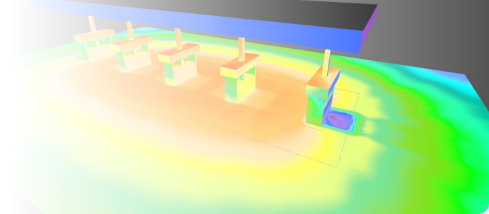You have no items in your shopping cart.
- Catalog Download
- Find a Distributor
Application Guide
Public Lighting for Parks and Outdoor Recreational Spaces
Welcome to Jarvis Lighting's collection of public lighting for parks and outdoor recreational spaces! Drawing from industry-leading expertise and cutting-edge technology, our energy-efficient and visually stunning lighting solutions enhance safety, aesthetics, and sustainability. Discover how our versatile park lighting options can transform your recreational areas, creating enjoyable experiences for visitors and communities alike
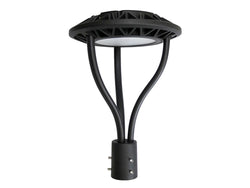
Public Lighting for Parks and Outdoor Recreational Spaces
Wattage Range: 26W
Lumens Range: 3,050-3,100lm
High quality lighting with long lasting LEDs. This light fixture is for outdoor locations with a low mounting height to improve safety and security areas. With a sleek architectural design,...
LED Post Top Luminaire PTL Series
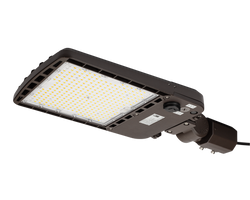
Public Lighting for Parks and Outdoor Recreational Spaces
Wattage Range: 100-300W
Lumens Range: 12,000-40,000lm
Experience superior illumination with Jarvis Lighting's JSAL-G2 Series Slim LED Area Light. Quick-mount arm enables fast, one-person installation, while its unique air vent design mitigates gasket failure and water damage....
LED Pole Mounted Area Lights JSAL-G2 Series - Bronze

Public Lighting for Parks and Outdoor Recreational Spaces
Wattage Range: 100-300W
Lumens Range: 12,000-40,000lm
Experience superior illumination with Jarvis Lighting's JSAL-G2 Series Slim LED Area Light. Quick-mount arm enables fast, one-person installation, while its unique air vent design mitigates gasket failure and water damage....
LED Pole Mounted Area Lights JSAL-G2 Series - White
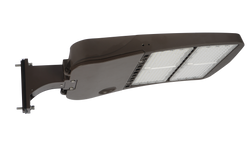
Public Lighting for Parks and Outdoor Recreational Spaces
Wattage Range: 100-300W
Lumens Range: 12,000-40,000lm
Jarvis Lighting's JSAL Series Slim LED Area Light offers a high quality solution for parking lot and area lighting applications. The JSAL series features a variety of quick-mount arms that...
LED Pole Mounted Area Lights JSAL Series - Bronze
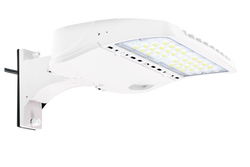
Public Lighting for Parks and Outdoor Recreational Spaces
Wattage Range: 100-300W
Lumens Range: 12,000-40,000lm
Jarvis Lighting's JSAL Series Slim LED Area Light offers a high quality solution for parking lot and area lighting applications. The JSAL series features a variety of quick-mount arms that...
LED Pole Mounted Area Light JSAL Series - White
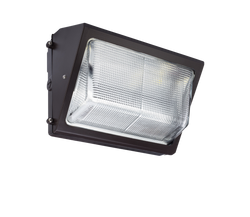
Public Lighting for Parks and Outdoor Recreational Spaces
Wattage Range: 29-103W
Lumens Range: 3,200-12,900lm
The Jarvis WMFT Series LED wall pack features a traditional forward-throw design combined with advanced internal optics. Utilization of light is improved by directing more light forward and down, increasing...
LED Forward Throw Wall Pack-Bronze- WMFT Series
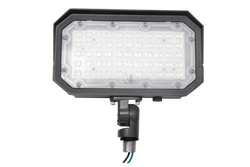
Public Lighting for Parks and Outdoor Recreational Spaces
Wattage Range:15-150W
Lumens Range: 1,833-20,000lm
FLD-G2 Series is a slim, highly-efficient LED flood light. Thus flood light features high-quality LEDs that will last a long time. FLD-G2 comes in 3 different mounting options.
FLD-G2 Series LED Flood Light Luminaire
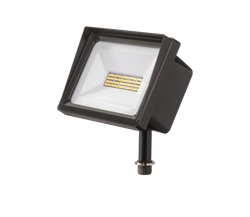
Public Lighting for Parks and Outdoor Recreational Spaces
Wattage Range:40-65W
Lumens Range: 3,700-6,906lm
The Jarvis FLD Series is a robust and efficient LED flood light fixture, designed for optimal performance and longevity. Featuring an adjustable knuckle mount for easy installation, a durable die-cast...
FLD Series LED Flood Light Luminaire

Public Lighting for Parks and Outdoor Recreational Spaces
Wattage Range: 100-300W
Lumens Range: 12,000-40,000lm
Experience superior illumination with Jarvis Lighting's JSAL-G2 Series Slim LED Area Light. Quick-mount arm enables fast, one-person installation, while its unique air vent design mitigates gasket failure and water damage....
LED Pole Mounted Area Lights JSAL-G2 Series - Bronze - Selectable Wattage and CCT

Public Lighting for Parks and Outdoor Recreational Spaces
Wattage Range: 100-300W
Lumens Range: 12,000-40,000lm
Experience superior illumination with Jarvis Lighting's JSAL-G2 Series Slim LED Area Light. Quick-mount arm enables fast, one-person installation, while its unique air vent design mitigates gasket failure and water damage....
LED Pole Mounted Area Lights JSAL-G2 Series - White - Selectable Wattage and CCT
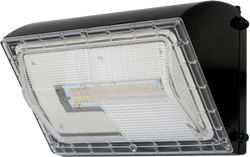
Public Lighting for Parks and Outdoor Recreational Spaces
Wattage Range: 29-103W
Lumens Range: 3,200-12,900lm
The WPFT-E Series LED Wall Pack Luminaire is designed for optimal outdoor lighting, providing security and efficiency for commercial and industrial settings. Its durable construction and advanced features ensure long-lasting...
Reliable Outdoor LED Wall Pack – WPFT-E Series
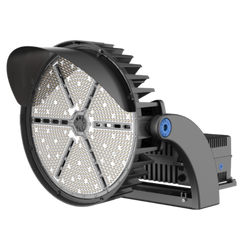
Public Lighting for Parks and Outdoor Recreational Spaces
Wattage Range: 100-300W
Lumens Range: 12,000-40,000lm
Illuminate sports fields with precision and reliability using the JSPORT-MAX Series LED Stadium Sport Light. Designed for both new and retrofit installations, this fixture offers exceptional performance, energy efficiency, and...
High-Performance LED Stadium Sport Light – JSPORT-MAX Series
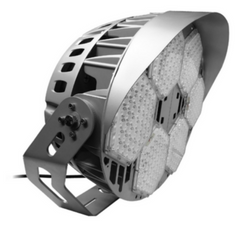
Public Lighting for Parks and Outdoor Recreational Spaces
Easy Installation
Glare Reduction Shield
Experience the ultimate in sports field lighting with the JSPORT-W Series from Jarvis Lighting. Designed to enhance visibility and performance, these lights ensure your field is brilliantly illuminated, creating a...
JSPORT-W Series LED Sports Lights: 400W & 600W Options
Lighting for Parks and Outdoor Recreational Spaces
Park lighting is essential for creating safe, inviting, and enjoyable public spaces. By incorporating energy-efficient LED technology, distinct lighting zones, and Dark Sky-compliant fixtures, lighting for parks can be both aesthetically pleasing and environmentally friendly. Smart controls and proper pole placement enhance the user experience, while regular maintenance ensures longevity and performance. Balancing safety, visibility, and ambiance, well-designed park lighting fosters community engagement and promotes the use of public spaces.
Best Practices
Create distinct lighting zones
Best Practices
Prioritize safety and visibility
Best Practices
Opt for Dark Sky-compliant fixtures
Best Practices
Incorporate smart lighting controls
Frequently Asked Questions
When designing park lighting, it is crucial to consider factors such as safety, visibility, aesthetics, and sustainability. Lighting for parks should create a welcoming atmosphere while ensuring the safety and security of visitors. Effective lighting plans account for various activity zones, such as walking paths, playgrounds, and sports facilities, and provide appropriate illumination levels and color temperatures to enhance the overall experience.
Proper park lighting is essential for ensuring safety and security in public spaces. Well-lit areas not only deter crime but also help prevent accidents by illuminating potential hazards like uneven surfaces and obstacles. Effective lighting for parks encourages visitors to feel comfortable and at ease, promoting a sense of community and increasing the use of public spaces during both day and night.
The recommended types of luminaires and fixtures for park lighting include energy-efficient LEDs, which offer longer lifespans and reduced maintenance costs. Pole-mounted fixtures are commonly used to illuminate walkways, while bollards and ground-mounted lights can highlight landscaping features. Floodlights and spotlights are suitable for sports facilities, while decorative lights and accent lighting can be used to create ambiance and showcase architectural elements.
Smart lighting controls are a valuable tool in optimizing energy consumption and reducing light pollution in parks. Features such as motion sensors, timers, and dimming capabilities allow park lighting systems to adapt to changing conditions and usage patterns, minimizing energy waste. In addition, smart controls can help to maintain consistent lighting levels while adhering to Dark Sky requirements, contributing to a more sustainable and environmentally friendly park environment.
To ensure optimal performance and coverage, it is important to consider spacing and mounting heights for light poles in park settings. Pole height should correspond with the area's size and usage, while spacing should provide adequate illumination without creating dark spots or excessive glare. Proper pole placement and mounting height for park lighting can enhance visibility and safety, ensuring an enjoyable experience for visitors and promoting a sense of well-being.
Meeting Dark Sky requirements and minimizing light pollution in parks involves careful planning and design. Selecting appropriate fixtures, such as full-cutoff luminaires, can help to direct light downward and prevent excessive glare or skyward illumination. Adjusting color temperature and brightness levels, utilizing smart controls, and following best practices for pole spacing and mounting height can all contribute to a park lighting system that respects the night sky and reduces its impact on the surrounding environment.




